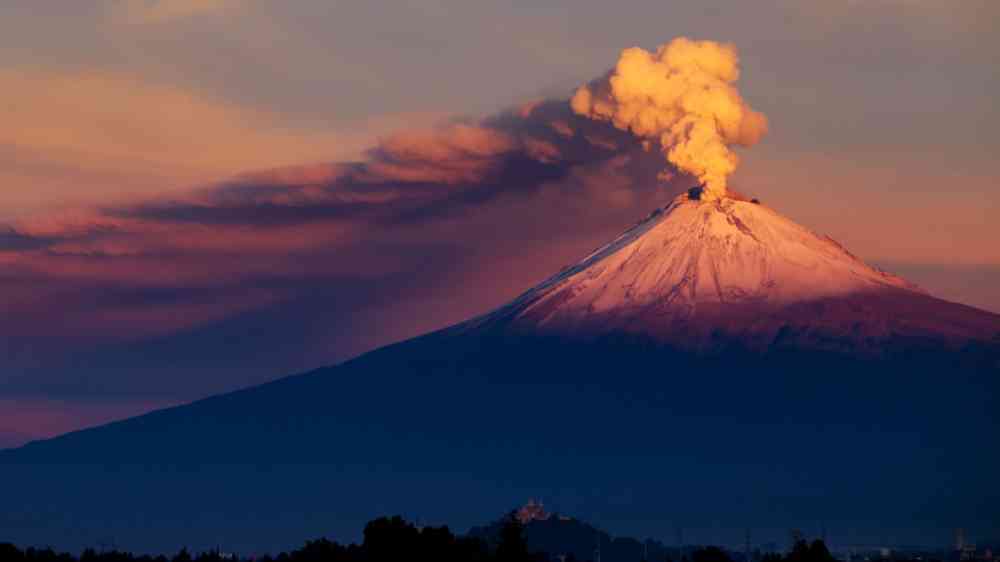Volcanoes often seem quiet until the moment they erupt. But deep underground, long before lava spills or ash clouds rise, hidden changes begin. These changes include the slow rise of magma through cracks in the Earth’s crust.
Trees Become Silent Messengers of Volcano Activity
As this magma moves upward, it releases gases, especially carbon dioxide. This gas then seeps into the soil and is absorbed by nearby trees.
When trees take in more carbon dioxide than usual, their leaves often grow greener and more vibrant. This small change in color is difficult to notice from the ground. But from space, powerful satellites can pick up these tiny changes. The green glow of healthier trees can serve as a subtle clue—like a whisper from nature—that something is changing beneath the surface.
A major project combining the efforts of NASA and the Smithsonian Institution is now focusing on using this tree behavior as a tool. Scientists believe that by watching the changes in tree color from space, they can detect signs of volcanic activity before an eruption occurs.
From Space with Malice: China’s Satellites Tipped the Balance in India-Pakistan War
Satellites and Spectrometers Spot Tree Clues from Above
To track these tree changes, scientists use satellites like NASA’s Landsat 8 and Terra, as well as Sentinel-2 from Europe. These space tools take pictures of the Earth’s surface in different colors of light. They can see things that human eyes can’t, like tiny changes in the color of leaves that signal higher levels of carbon dioxide.
These images from space are backed up by ground missions. Teams of researchers fly over volcanoes with special instruments called spectrometers, which measure how light reflects off tree leaves. The colors tell them how healthy the trees are and how much carbon dioxide they might be taking in. Some teams even go to the volcanoes on foot, collecting leaf samples and testing carbon dioxide levels in the air and soil.
One major mission, known as the Airborne Validation Unified Experiment: Land to Ocean, focused on active volcanoes in Panama and Costa Rica. Researchers collected detailed data from trees near these volcanoes while checking the carbon dioxide levels in the area. This combination of satellite, airborne, and ground data helps paint a clearer picture of what’s happening underground.
Detecting the Undetectable: Volcano Gases Hidden in Green
Carbon dioxide from volcanoes is hard to detect because it mixes with the carbon dioxide already in the atmosphere. Most satellites can easily spot sulfur dioxide, another gas that comes from volcanoes. But carbon dioxide often escapes earlier in the eruption process—and gives a quieter signal. Since it’s difficult to detect directly, scientists now look for its effects instead.
Trees near volcanoes that are becoming active may start absorbing more carbon dioxide. When this happens, they become greener. This green-up, though very small, can be seen from space using advanced imaging technology. These greener patches might be a new way to warn about volcanic activity.
Switzerland Steps In as Tensions Mount Over Militarization of Space
This method is especially useful for remote or dangerous volcanoes. Many of the 1,350 active volcanoes on Earth are located in hard-to-reach places—on mountains or in thick forests. It’s difficult, expensive, and risky to install gas sensors or send teams to these locations. But satellites can look down from space and monitor large areas regularly.
There are some limits. Not all volcanoes are surrounded by enough trees. In places with deserts or rocky landscapes, this method may not work. Even in forested areas, tree behavior can be affected by weather, fires, or plant diseases, making it tricky to be sure that greener trees mean volcanic gases. Still, it gives scientists another clue to add to what they already watch—like earthquakes or changes in the shape of the ground.
In one past case, sensors that measured both carbon dioxide and sulfur dioxide helped officials detect signs of a volcano waking up. These early signals led to a successful evacuation of thousands of people, and there were no lives lost when the volcano erupted.
By combining tree data with satellite images, researchers have found a new way to listen to what volcanoes are saying. Trees, through their silent greening, may help reveal secrets hidden beneath the Earth’s surface. And now, from far above, satellites can help us understand those secrets—before it’s too late.




